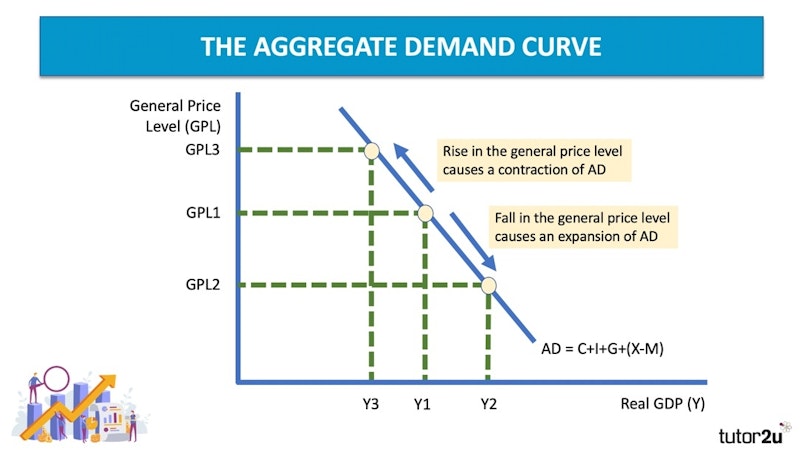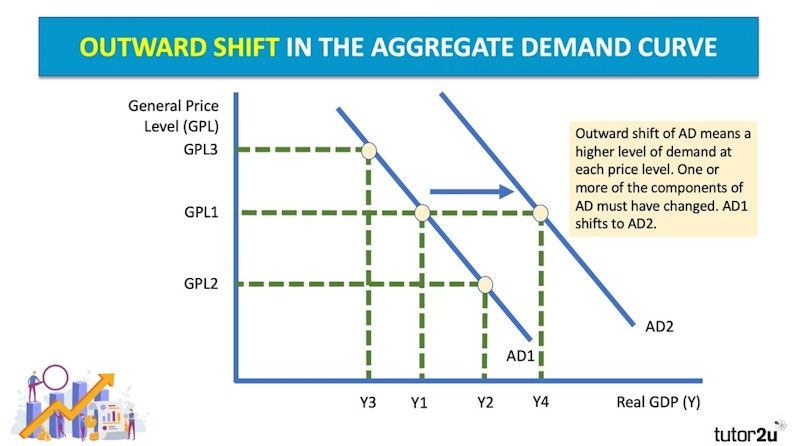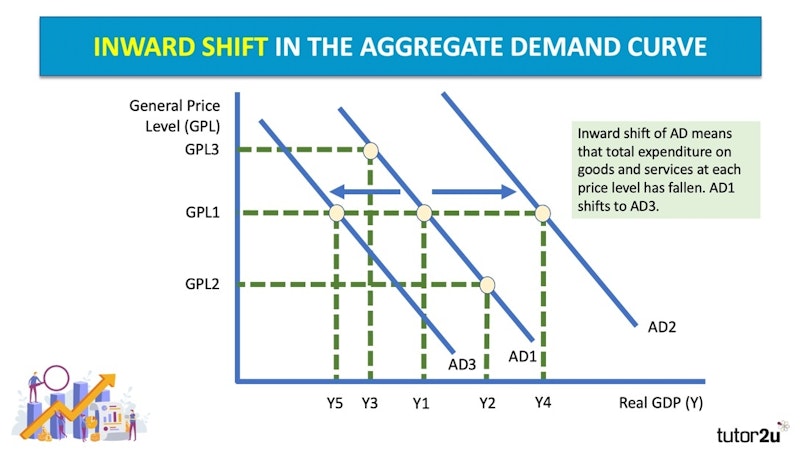Study Notes
The Aggregate Demand Curve
- Level:
- AS, A-Level, IB
- Board:
- AQA, Edexcel, OCR, IB, Eduqas, WJEC
Last updated 27 Oct 2020
The aggregate demand curve shows a relationship between aggregate demand and the general price level.
A fall in the general price level causes an expansion of AD

A rise in the general price level causes a contraction of AD

Why does the aggregate demand curve slope downwards from left to right?
Real income effect: As the price level falls, the real value of income rises, and consumers can buy more of what they want or need – this is known as the real money balance effect
Balance of trade effect: A fall in the relative price of level of Country X could make foreign-produced goods and services more expensive, causing a rise in exports and a fall in imports. Exports are an injection, imports a withdrawal.
Interest rate effect: If price inflation is low and this might lead to a reduction in interest rates if the central bank has a given inflation target. Lower interest rates means there is less incentive to save and a fall in interest rates may cause the exchange rate to depreciate and improve exports.
Shifts in the Aggregate Demand curve
Shifts in the aggregate demand curve are caused by factors independent of changes in the general price level.
An outward shift of AD means a higher level of demand at each price level. One or more of the components of AD must have changed. AD1 shifts to AD2.

An inward shift of AD means that total expenditure on goods and services at each price level has fallen. AD1 shifts to AD3.

What are the main causes of shifts in the level of aggregate demand?
- Changes in real incomes and employment
- Changes in government spending, taxation and borrowing
- Changes in monetary policy interest rates and the supply of credit
- Changes in the external value of a country’s exchange rate
- Changes in the rate of economic growth of trading partner nations
- Fluctuations in consumer and business confidence
You might also like

Relevance of Keynesian Economics
17th October 2014

Aggregate Demand and Aggregate Supply Lesson Resource
22nd January 2016

Aggregate Demand Glossary
5th May 2012
Measuring the Balance of Payments
Study Notes
Balance of Payments - Current Account Deficits
Study Notes
Balance of Payments - Trade Imbalances
Study Notes
Multiplier, Accelerator and Keynesian Economics (Revision Presentation)
Teaching PowerPoints